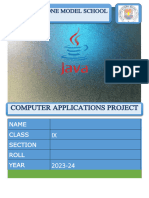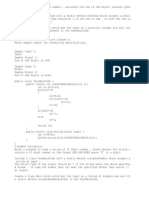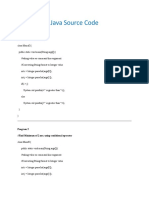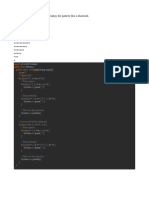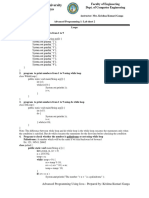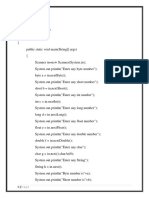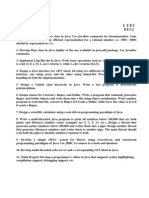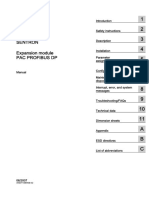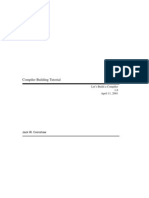0% found this document useful (0 votes)
38 views50 pagesComputer Project
This document is a project report by Karanveer Singh for Class IX Science, focusing on various Java programming applications as part of the ICSE curriculum for the session 2024-25. It includes acknowledgments, an introduction to Java, system specifications, and detailed descriptions of multiple programming exercises, including their source codes, workings, and outputs. The project aims to enhance understanding of programming concepts through practical examples.
Uploaded by
karanveer20158Copyright
© © All Rights Reserved
We take content rights seriously. If you suspect this is your content, claim it here.
Available Formats
Download as DOCX, PDF, TXT or read online on Scribd
0% found this document useful (0 votes)
38 views50 pagesComputer Project
This document is a project report by Karanveer Singh for Class IX Science, focusing on various Java programming applications as part of the ICSE curriculum for the session 2024-25. It includes acknowledgments, an introduction to Java, system specifications, and detailed descriptions of multiple programming exercises, including their source codes, workings, and outputs. The project aims to enhance understanding of programming concepts through practical examples.
Uploaded by
karanveer20158Copyright
© © All Rights Reserved
We take content rights seriously. If you suspect this is your content, claim it here.
Available Formats
Download as DOCX, PDF, TXT or read online on Scribd
/ 50












